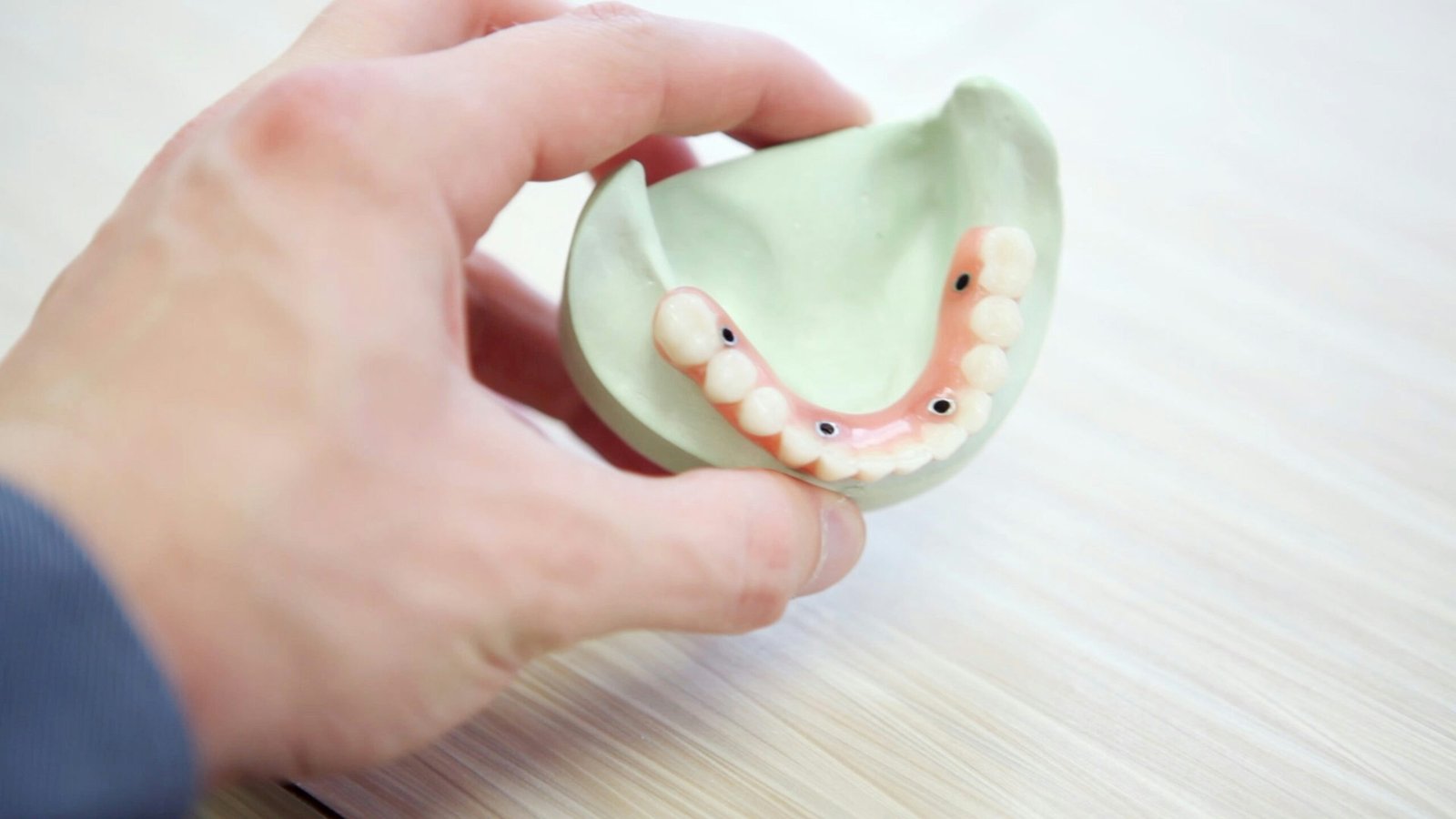Dental Bridge Overview
Dental bridges are like the superheroes of the dental world, swooping in to save the day when teeth go missing. They’re made up of crowns on either side of the gap and a fake tooth or teeth in the middle, called pontics. These bridges can be crafted from gold, alloys, porcelain, or a combo (Chestnut Dental).
Types of Dental Bridges
Dental bridges come in a few flavors, each catering to different dental needs and tastes. Here’s the scoop on the most common types:
- Traditional Dental Bridge: This is the classic choice, featuring a fake tooth or teeth held in place by crowns cemented onto the neighboring teeth. Conventional bridges are usually made of porcelain fused with metal or ceramics.
- Cantilever Dental Bridge: This one’s for when there’s only one tooth next to the gap. It’s not the go-to for the back of the mouth since it can put too much pressure on other teeth. Curious? Check out Cantilever Bridge Dental.
- Maryland Dental Bridge: Also known as a resin-bonded bridge, this type uses a metal or porcelain framework bonded onto the back of the adjacent teeth. It’s often used for front teeth and requires less prep work on the neighboring teeth. For more info, visit Maryland Bridge Dental.
- Implant-Supported Bridge: This bridge is like the traditional one but gets its support from dental implants instead of natural teeth. It’s handy when more than one tooth is missing. For more details, check out Dental Implant Bridge.
Materials Used in Dental Bridges
Dental bridges can be made from various materials, offering different looks, toughness, and price perks. Here’s the lowdown on the most common materials:
- Porcelain: Porcelain bridges are popular because they look like real teeth. They can be color-matched to blend in with existing teeth, and they are often fused to metal for extra strength (Carmel Dental Associates).
- Gold: Gold bridges are super durable and friendly to folks with metal allergies. But they don’t win any beauty contests compared to porcelain.
- Alloys like nickel or chromium are used for their strength and durability. They’re often paired with porcelain to create a firm and natural-looking bridge.
- Combination of Materials: Some bridges mix materials to balance looks and strength. For example, a bridge might have a metal framework with porcelain on the outside.
| Material | Durability | Aesthetics | Cost |
|---|---|---|---|
| Porcelain | High | Excellent | Moderate |
| Gold | Very High | Poor | High |
| Alloys | High | Moderate | Low |
| Combination | High | Excellent | High |
For more info on the cost of dental bridges, visit our article on dental bridge cost.
Dental bridges are generally cheaper upfront than implants, with a low-end dental bridge costing about $500 per tooth and more expensive bridges up to $1,200. Dental implants usually cost about $3,000 to $4,500 per tooth. Insurance is more likely to cover at least some of the cost of dental bridges compared to implants.
For those weighing their options, it’s wise to consider the pros and cons of both dental bridges and dental implants. Factors like cost, durability, and personal oral health needs should be part of the decision-making process. For more detailed comparisons, visit our article on dental bridge vs implant.
Dental Implant Overview
Dental implants are like the rockstars of tooth replacement. They’re a go-to choice for folks looking to fill those pesky gaps with something that looks and feels like the real deal.
Understanding Dental Implants
So, what’s the scoop on dental implants? Picture this: tiny titanium posts snugly placed into your jawbone, right under the gums. These little guys are the unsung heroes, holding your new tooth steady (Chestnut Dental). The whole shebang involves a few steps, starting with a chat with your dentist, then the implant surgery, and finally, popping on the new tooth.
| Step | Description |
|---|---|
| Initial Consultation | Checking out your mouth to see if implants are your jam |
| Surgical Placement | Popping that titanium post into your jawbone |
| Healing Period | Letting the bone and implant become best buds (osseointegration) |
| Attachment of Artificial Tooth | Securing the crown, bridge, or denture to the implant |
Advantages of Dental Implants
Why are dental implants the bee’s knees compared to old-school bridges? Let’s break it down:
- Longevity and Durability: These implants are built to last, like a trusty old car that keeps going. With a bit of TLC, they can stick around for life and handle all the munching and crunching you throw at them.
- Natural Feel and Appearance: Implants are the masters of disguise, blending in with your natural teeth. They fit like a glove, so you can chow down, chat, and grin without a second thought (Cleveland Clinic).
- Preservation of Jawbone Health: Unlike bridges, implants work your jawbone, keeping it strong and your face looking fab. They help keep everything in tip-top shape (Chestnut Dental).
- No Impact on Surrounding Teeth: Implants are independent—they don’t need to lean on neighboring teeth. This means your other teeth stay out of the drama, reducing future dental headaches (Cleveland Clinic).
- Improved Quality of Life: Implants allow you to chew and chat like a pro, boosting your quality of life. Plus, they give you a smile that can light up a room, which is a real confidence booster (FDA).
Are you curious about the price tag of dental implants? Check out our dental implants cost page. If you’re considering a dental bridge instead, we’ve got the lowdown on dental bridge cost and the different types, like the Maryland bridge and cantilever bridge.
Knowing the perks and process of dental implants can help you make a wise choice about filling those gaps. For advice about you, chat with a dental pro who can assess your situation and suggest the best way forward.
Dental Bridge vs. Dental Implant
Choosing between a dental bridge and an implant can feel like picking between a rock and a hard place, but don’t worry; we have the scoop to help you. It’s all about weighing the bucks, how long they’ll last, and how tough they are. Let’s break it down so you can make the best choice for your chompers.
Cost Considerations
Money talks, right? When it comes to dental work, the price tag is a biggie. Dental bridges are usually the cheaper option upfront. According to Healthline, you might shell out around $500 for an essential bridge per tooth, but if you’re feeling fancy, it could go up to $1,200. Implants are a splurge, running between $3,000 to $4,500 per tooth.
| Treatment Type | Cost per Tooth |
|---|---|
| Dental Bridge | $500 – $1,200 |
| Dental Implant | $3,000 – $4,500 |
Insurance can be your best buddy here. Dental plans often cover a chunk of the bridge costs, making them a wallet-friendly choice if you’ve got coverage. For the nitty-gritty on bridge costs, check out our page on dental bridge costs.
Longevity and Durability
Now, let’s talk about how long these bad boys last. Implants are like the Energizer Bunny—they keep going and going. With the proper care, they can stick around for a lifetime. They’re gentle on the neighboring teeth, help your jaw stay strong, and keep your gums happy.
While sturdy, bridges need a tune-up every 5 to 15 years. They’re challenging but not as long-lasting as implants so that you might replace them more often.
| Treatment Type | Longevity |
|---|---|
| Dental Bridge | 5 – 15 years |
| Dental Implant | Lifetime |
Even though implants cost more upfront, their durability makes them a wise investment over time. Implants could be your best bet for the long haul if you’re in it. For more scoops on implants, click on our page on dental implants.
When you’re stuck between a bridge and an implant, consider the cost and how long each option will last. Chatting with a dentist can give you the lowdown tailored to your needs and budget. For more tips on making this choice, visit our page on dental implant bridge.
Factors Influencing Choice
Choosing between a dental bridge and a dental implant isn’t just about picking the latest trend in tooth replacement. It’s a decision that involves weighing up your oral health and how you live your life. Let’s break it down so you can make a choice that fits you like a glove.
Oral Health Considerations
Your mouth’s health is a big player in deciding whether a dental bridge or implant is your best bet. Implants have their perks, like lasting longer, feeling more natural, and keeping your jawbone tip-top shape (Chestnut Dental). But not everyone can hop on the implant bandwagon.
- Jawbone Health: If your jawbone’s as strong as a bull and free from decay, you’re in the running for implants. But if you’ve got health issues that slow healing, like diabetes or leukemia, implants might not be your thing.
- Number of Missing Teeth: Are you missing a whole row of teeth? A bridge might be your best friend. Implants need a separate one for each tooth, which can be a wallet-buster and a hassle for multiple teeth.
| Factor | Dental Bridge | Dental Implant |
|---|---|---|
| Jawbone Health | Not needed | Needed |
| Number of Missing Teeth | Great for many teeth | Best for one tooth |
Lifestyle and Preferences
Your lifestyle and what you prefer also steer the ship in this decision. Here’s what to think about:
- Cost: Bridges are usually kinder to your bank account upfront. They start around $500 per tooth, while the fancy ones can hit $1,200. Implants, on the other hand, range from $3,000 to $4,500 per tooth. Insurance might give you a hand with bridges more than implants (Healthline). Check out our pages on dental bridge and implant costs for more info.
- Longevity: Implants are like the Energizer Bunny—they keep going and going, needing fewer replacements than bridges, even if they initially cost more. Bridges might need a swap more often.
- Maintenance: Implants are low-maintenance compared to bridges. Bridges need extra TLC to clean under the pontic (the part that fills the gap).
| Factor | Dental Bridge | Dental Implant |
|---|---|---|
| Cost | $500 – $1,200 per tooth | $3,000 – $4,500 per tooth |
| Longevity | Needs more swaps | Sticks around longer |
| Maintenance | More upkeep | Less upkeep |
Considering these health and lifestyle factors, you can choose between a dental bridge and implant that suits you. Chatting with a dental pro is also key to finding the best fit for your needs and budget. For more scoop, visit our pages on dental bridge and dental implants.
Risks and Complications
When thinking about swapping out those missing teeth, it’s good to know what might go wrong with dental bridges and implants. Let’s break down the common hiccups you might face with each choice.
Potential Issues with Dental Bridges
Dental bridges do a solid job, but they come with their bag of tricks. If one of the teeth holding up the bridge has issues, it can mess up the whole setup, possibly leading to more tooth loss. The bigger the bridge, the more teeth are involved, and the more chances things go sideways.
| Risk/Complication | Description |
|---|---|
| Compromised Abutment Teeth | Trouble with one supporting tooth can mess up the whole bridge. |
| Plaque Accumulation | Bridges make flossing tricky, upping the risk of plaque, decay, and gum disease. |
| Replacement Needs | Bridges might need a redo every 10-20 years due to gum changes or looks. |
| Resin Retained Bridges | These can pop off more easily, especially if cantilevered, leading to potential cavities. |
Bridges need special cleaning, which can lead to more plaque, decay, or gum disease compared to single crowns or implants. Plus, they might need a makeover every 10-20 years because gums shrink, messing with their look. Front teeth bridges might need a redo if they start looking shabby, while back teeth bridges are easier to clean and less hassle.
Resin-retained bridges are more likely to come loose than regular ones, especially cantilevered ones. If not caught early, this can lead to cavities. If this type of bridge fails, you might need to switch to a traditional fixed bridge or an implant crown.
Complications Associated with Dental Implants
Dental implants are often seen as challenging compared to bridges but have potential problems. One big worry is infection at the implant site, which can cause the implant to fail if not treated quickly.
| Risk/Complication | Description |
|---|---|
| Infection | Infection at the implant site can lead to failure. |
| Nerve Damage | Possible nerve damage during the procedure, causing pain or numbness. |
| Sinus Problems | Implants in the upper jaw might poke into the sinus cavities, causing trouble. |
| Implant Failure | Though rare, implants can fail due to bad placement or poor bone integration. |
Nerve damage is another risk during the implant procedure, causing pain or numbness nearby. Implants in the upper jaw can sometimes stick into the sinus cavities, leading to sinus issues.
While not common, implant failure can happen due to bad placement or poor bone integration. Regular dental check-ups are key to catching and fixing problems like gum disease or decay early, potentially avoiding implant-related issues. For more info on the perks and things to consider with dental implants, check out our article on dental implants.
Knowing the possible risks and complications of dental bridges and implants is crucial for wise choices. Chatting with a dental pro and weighing personal needs and budget can help find the best tooth replacement option for each person. For more details on the costs of these choices, look at our articles on dental bridge and dental implant costs.
Making the Decision
Picking between a dental bridge and an implant can feel like a tough call. It’s all about weighing the advice from the pros, what you personally need, and how much you’re willing to spend.
Consultation with Dental Professional
Chatting with a dentist is a must when you’re stuck between a dental bridge and a dental implant. They can dish out advice tailored to your mouth’s health, medical past, and what your teeth need. Plus, they’ll break down each choice’s good, bad, and ugly so you can make a smart move.
During your visit, the dentist will check out:
- How your other teeth are holding up
- The state of your gums
- Bone strength and shape
- How clean do you keep your mouth
These checks help determine whether you’re a good fit for a dental implant or if a bridge is more your style. For more signs that you might need dental implants, check out our article on eight signs that you need dental implants.
Individual Needs and Financial Factors
Your personal needs and wallet size are big players in this decision-making game. Everyone has their own quirks and budget limits to consider.
Individual Needs
Your daily habits and what you like can sway your choice between a dental bridge and an implant. A dental implant might be your jam if you’re all about a long-lasting fix with little fuss. But a dental bridge could be the way to go if you’re after something quick and hassle-free.
Financial Factors
Money talks when choosing between a dental bridge and an implant. Implants usually cost more than bridges, and insurance can be mixed. Insurance folks often see implants and bridges as fancy treatments, with bridges more likely to get the nod. It’s wise to chat with your insurance to get the lowdown on what’s covered and what you’ll have to fork out.
| Treatment Option | Average Cost | Insurance Coverage Likelihood |
|---|---|---|
| Dental Bridge | $500 – $1,200 per tooth | Higher |
| Dental Implant | $3,000 – $4,500 per implant | Lower |
For more on the costs associated with these treatments, see our articles on dental bridge cost and dental implant cost.
By mulling over these factors and getting a dentist’s take, you can make a choice that fits your mouth’s needs and your budget. For more tips, dive into our resources on dental implant bridge and cantilever bridge dental.











